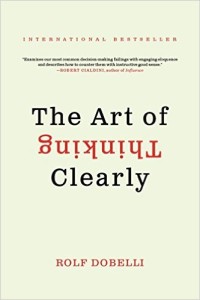Creating Community Through Blog Conversations
 “You create community by having conversations with people who are excited about the same thing as you are,” says Elizabeth Gerber, associate professor of design at Northwestern University. Gerber is one of many scholars exploring what really compels people to give to other people online through crowdfunding. As much as crowdfunding is a modern economic phenomenon, writes Elizabeth Kelsay in Psychology Today, it’s also a social and psychological one, fueled by fundamental human impulses.
“You create community by having conversations with people who are excited about the same thing as you are,” says Elizabeth Gerber, associate professor of design at Northwestern University. Gerber is one of many scholars exploring what really compels people to give to other people online through crowdfunding. As much as crowdfunding is a modern economic phenomenon, writes Elizabeth Kelsay in Psychology Today, it’s also a social and psychological one, fueled by fundamental human impulses.
As business blog content writers, we have reason, I think, to be intensely interested in this research on the crowdfunding phenomenon. Sonja Lyubomirsky of the University of California, Riverside, believes the secret is that giving online appeals to the essential need to feel like part of a group.
Jonah Berger, professor of marketing at the University of Pennsylvania’s Wharton School studied nearly 7,000 articles in The New York Times to determine what was special about those on the most-emailed list. He found that an article was more likely to become viral the more positive it was. When we share information, we create an energy exchange, Berger says, that amplifies our own pleasure.
Kevan Lee of bufferapp.com says we measure blog traffic by digging into analytics, but don’t pay enough attention to the immeasurable elements of blogging which cannot be quantified. Instead of tracking how many “views”, “likes”, and “clicks”, Lee says, we should be asking whether the content:
- is so good you’d bring a coworker over to see it
- you’d email it to a friend
- the reader will learn something new
“The only people in a community are those that believe they are, not those that have a completed a registration in 30 seconds,” observes Richard Millington in MOZ. Increasing a sense of community means adding an explicit, shared goal to the group. Increasing a sense of community means asking individuals what skills and experiences they can contribute to the group, Milligan says.
How is that best done? Ask a question for your readers at the end of posts, suggests blogger Melyssa Griffin. Add a poll or reader survey and share the responses, she says.
In a way, as bloggers, we start out ahead of the game; the readers who found their way to our blog are, by definition, excited about the same thing as we are. Now it’s up to us to foster that sense of community.





Follow us online!